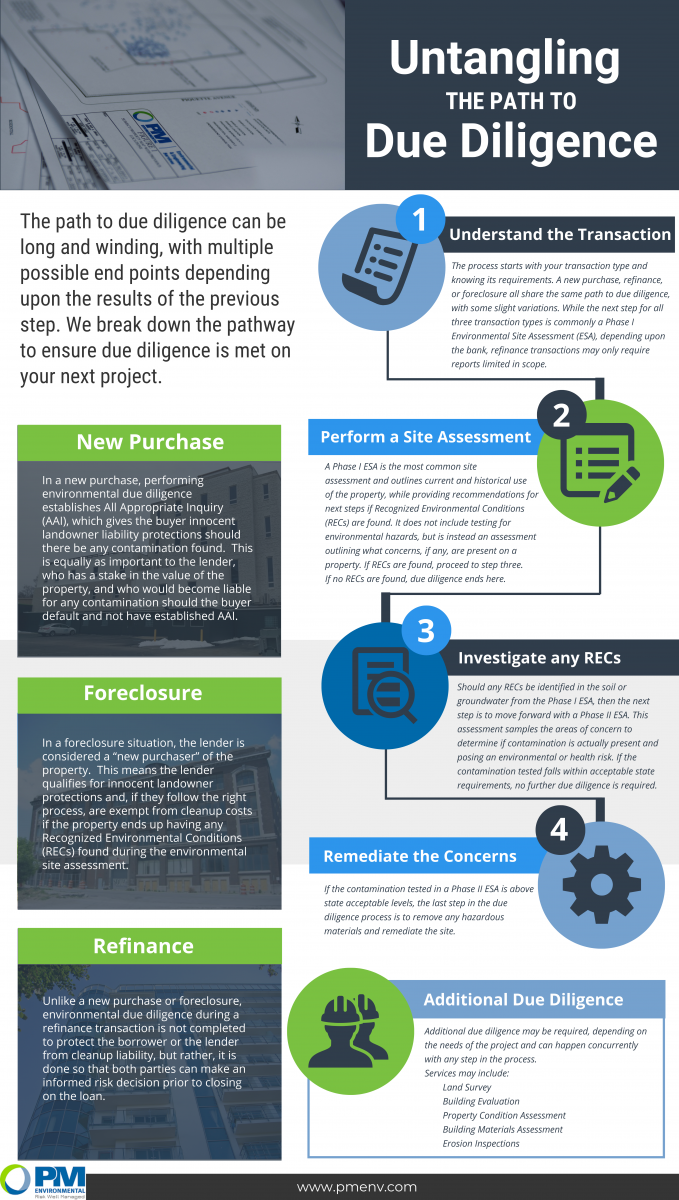Untangling the Path to Due Diligence
When dealing with property acquisition, there is always some level of environmental risk. Whether you are a buyer, seller or lender, performing environmental due diligence is the best way to ensure that you don’t get stuck with someone else’s environmental liabilities. So what exactly is environmental due diligence? What role does it play in acquiring property? And, why is it necessary?
Environmental Due Diligence Defined
If you have been involved in any sort of commercial real estate transaction, you have probably heard the words ‘Environmental’, ‘Due Diligence’ and ‘Risk’ thrown around. But what do they mean? What makes them a significant part of the first steps in purchasing a property?
Environmental Due Diligence is the process of assessing a property for any possible risk of environmental contamination, either in the soil or the groundwater. Environmental due diligence can take many forms, depending upon the transaction type. Typical types of due diligence can include Environmental Questionnaires, Transaction Screens, Internal Environmental Screens, Phase I ESAs and Phase II ESAs.
The purpose of completing environmental due diligence, and why it is so important in the first steps of property acquisition, is that it allows the buyer to accurately assess what potential risks may be present on the property, and what steps may need to be taken to mitigate that risk.
On the flip side, it is important for the lender to note that the buyer has taken steps to protect themselves, and their investment, from potential environmental contamination. Environmental due diligence will outline potential concerns that could affect the use, the actual or perceived property value, as well as divert the borrower’s cash flow, thereby affecting loan repayment.
The Due Diligence Pathway
Now that we know what the term Environmental Due Diligence means, we can better understand the role it has during a new purchase, refinance or a foreclosure.
Understanding just what Environmental Due Diligence is, as well as the role it plays in property acquisition, allows you, as the buyer or lender, to better understand just why it is necessary. It is imperative that the property you are purchasing or lending on is environmentally sound. Ensuring that the appropriate protections are established, and that the necessary steps to address any environmental concerns are taken.
Talk to us today!




